Abstract
In malaria eradication the residual insecticide exerts upon the mosquito's vectorial capacity a direct insecticidal impact, the order of which may be measured by observing the decrease in the proportion of parous females. The impact is expressed as the product of the degree of reduction of the expectation of infective life (termed the longevity factor of impact) and that of the expectation of life (the density factor). To compute the factors from the proportion parous it is necessary to know also the mean difference in age between the nulliparous and the youngest parous females in the sample, and the sporogonic period of the parasite.
Graphs are presented to enable the field worker, who has observed these parameters, to read off from his data the proportion surviving one day, the expectation of infective life and the expectation of life. Examples from the field are used to illustrate the manner of computing the direct insecticidal impact with the aid of the graphs. It is emphasized that this method can only measure the relative impact on vectorial capacity, and will not show whether the actual level of vectorial capacity is such that a malaria reproduction rate of <1 is indicated.
Full text
PDF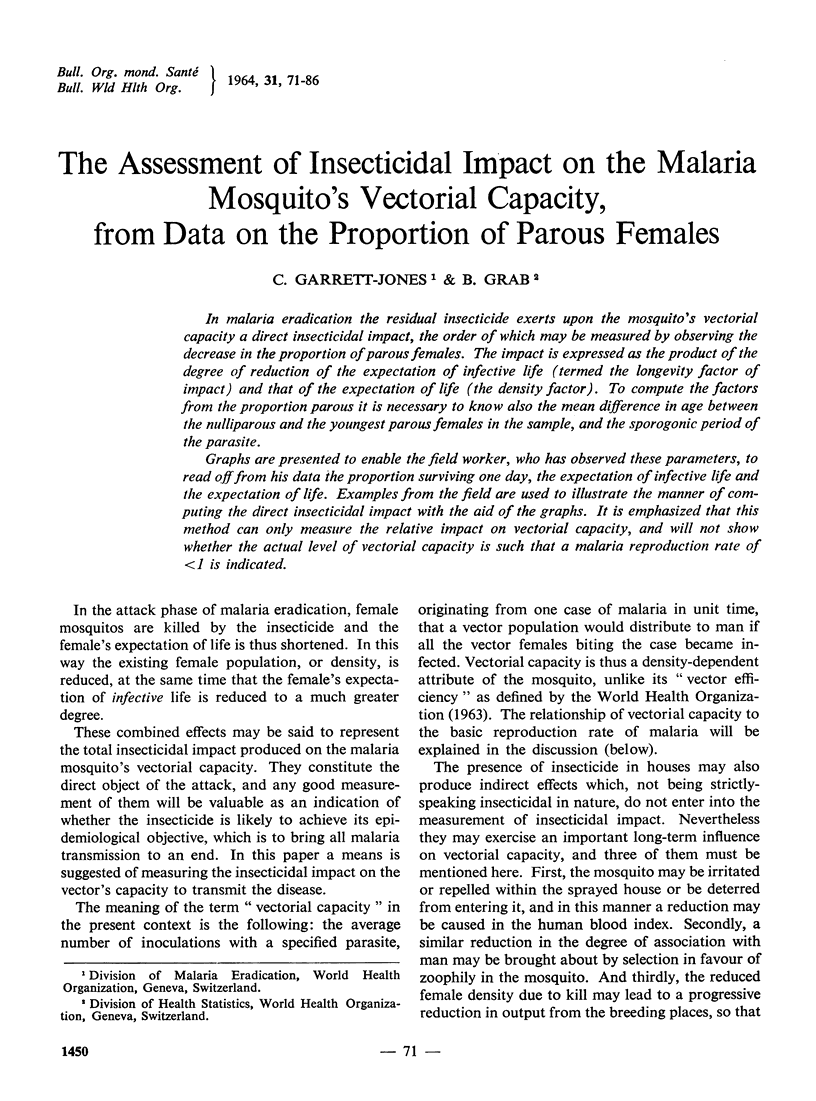
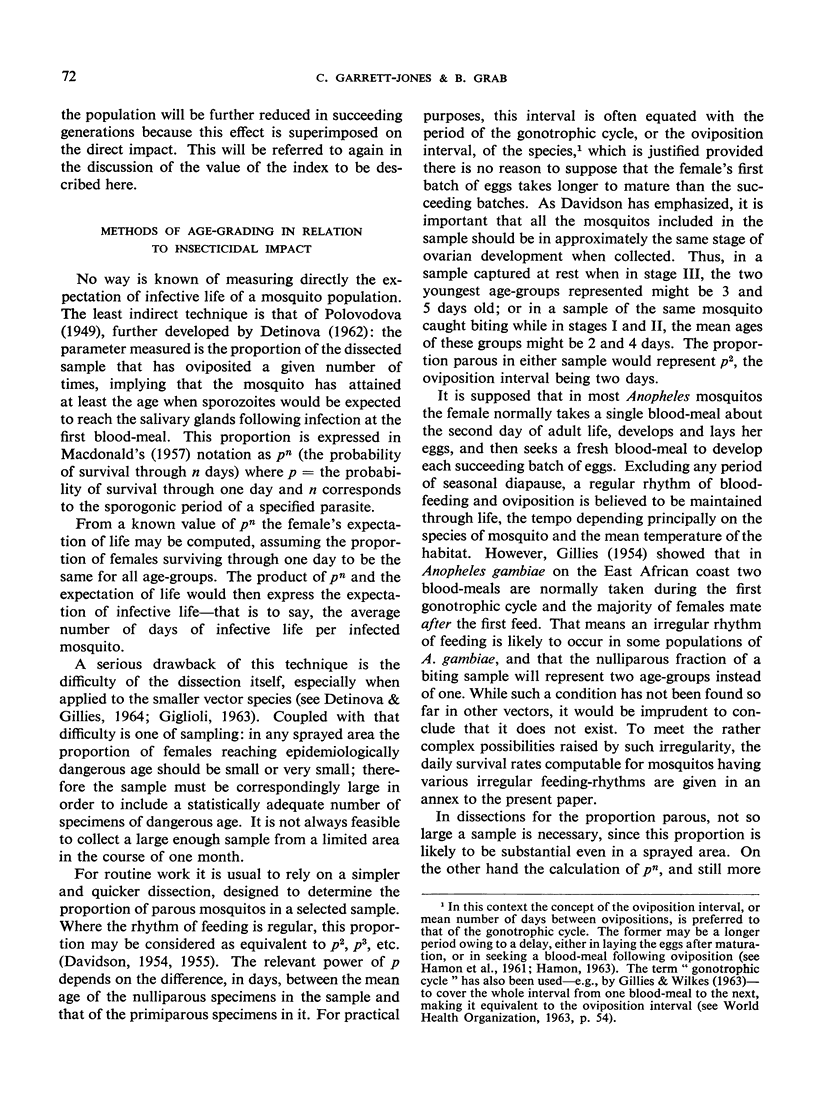
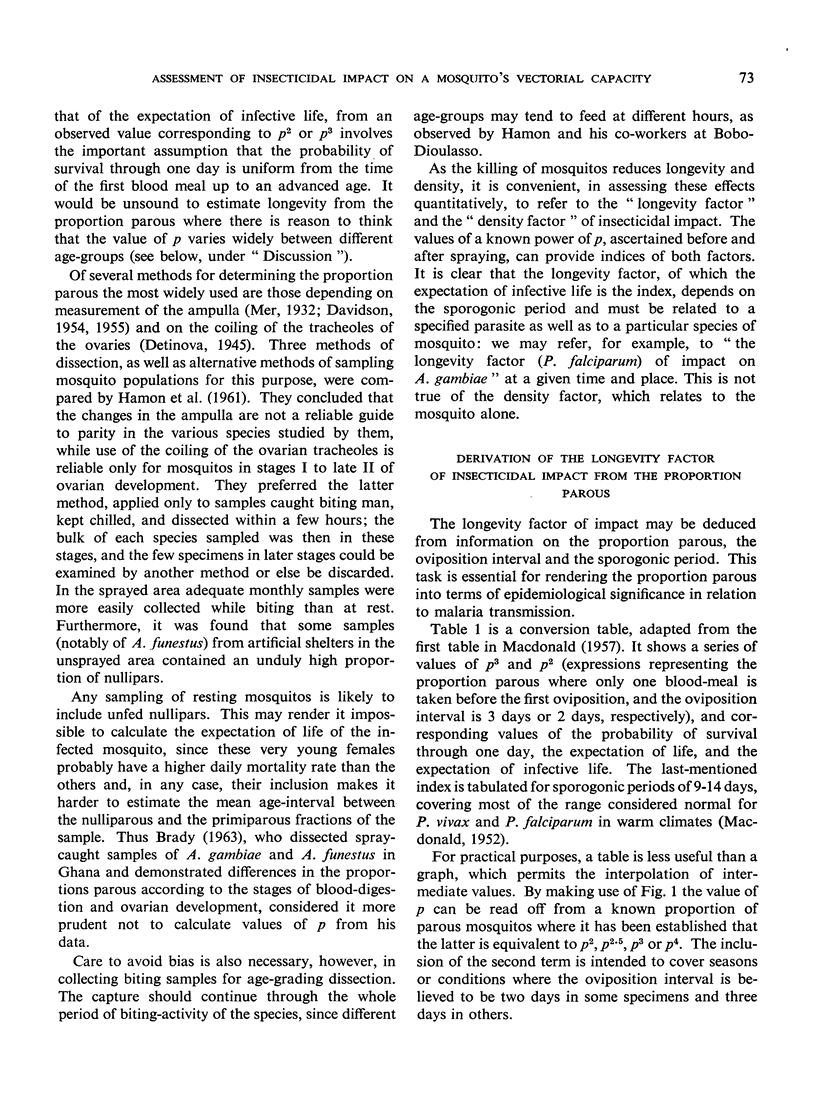
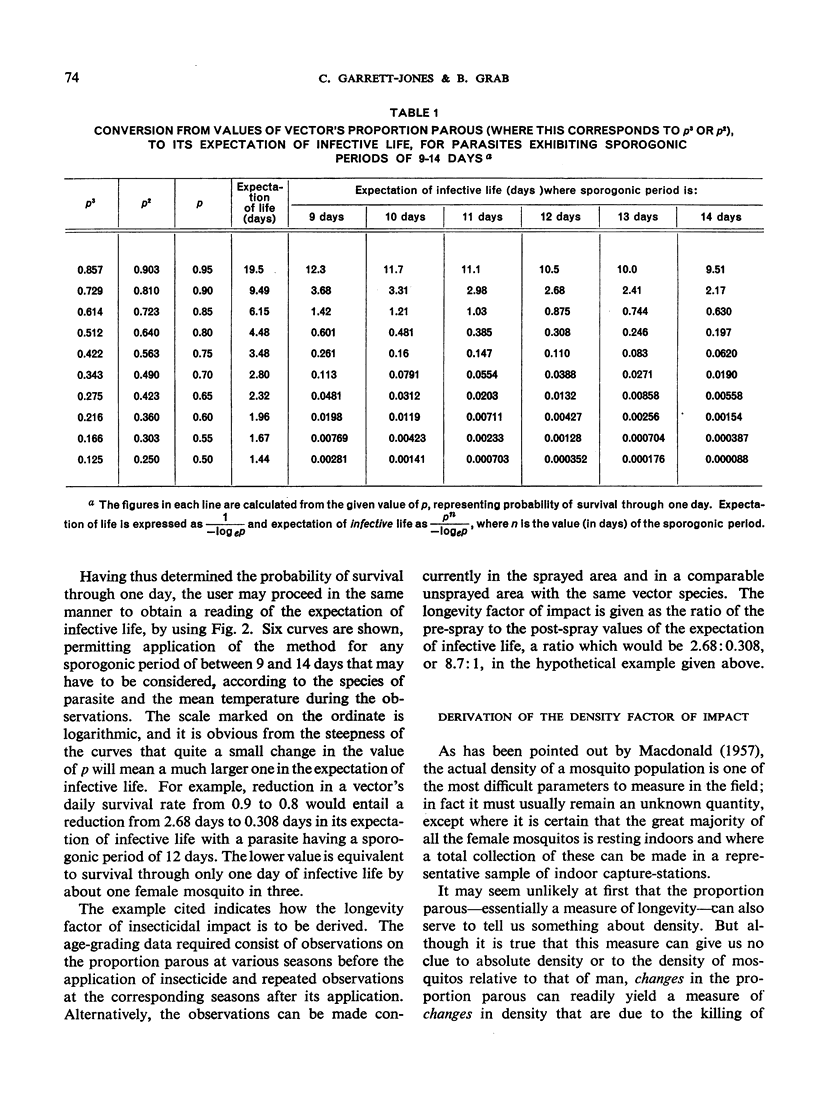
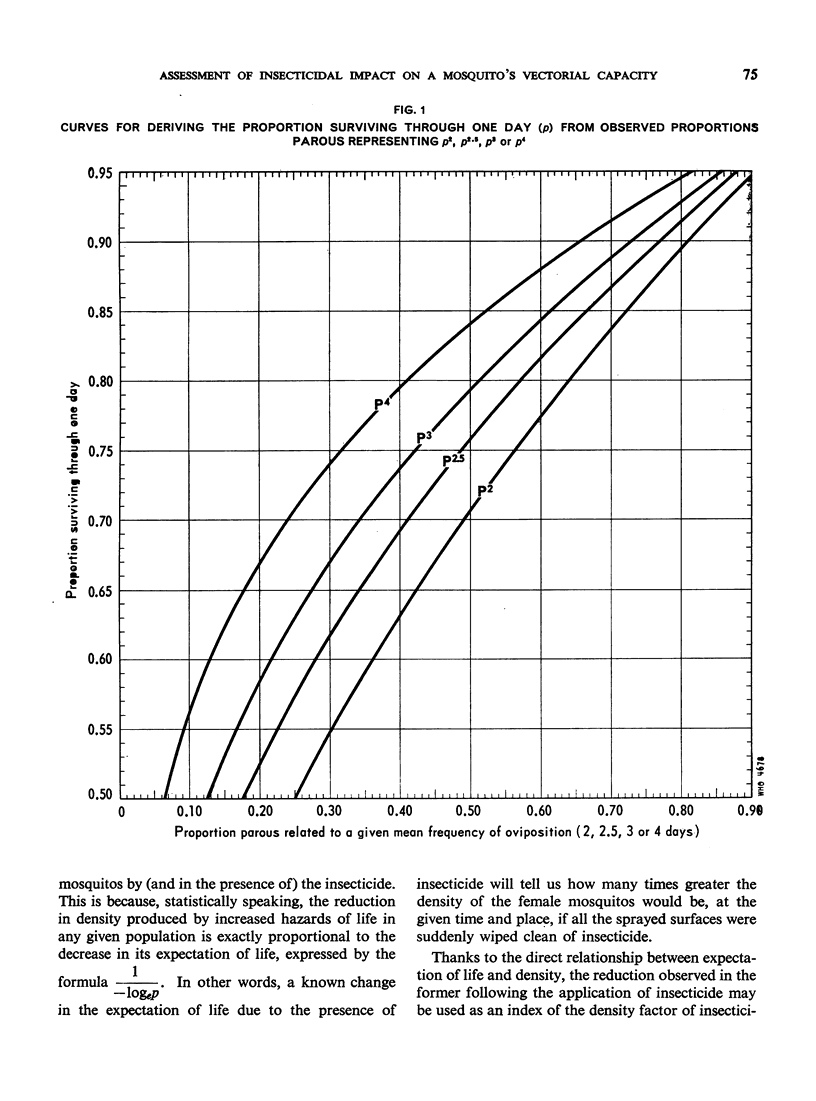
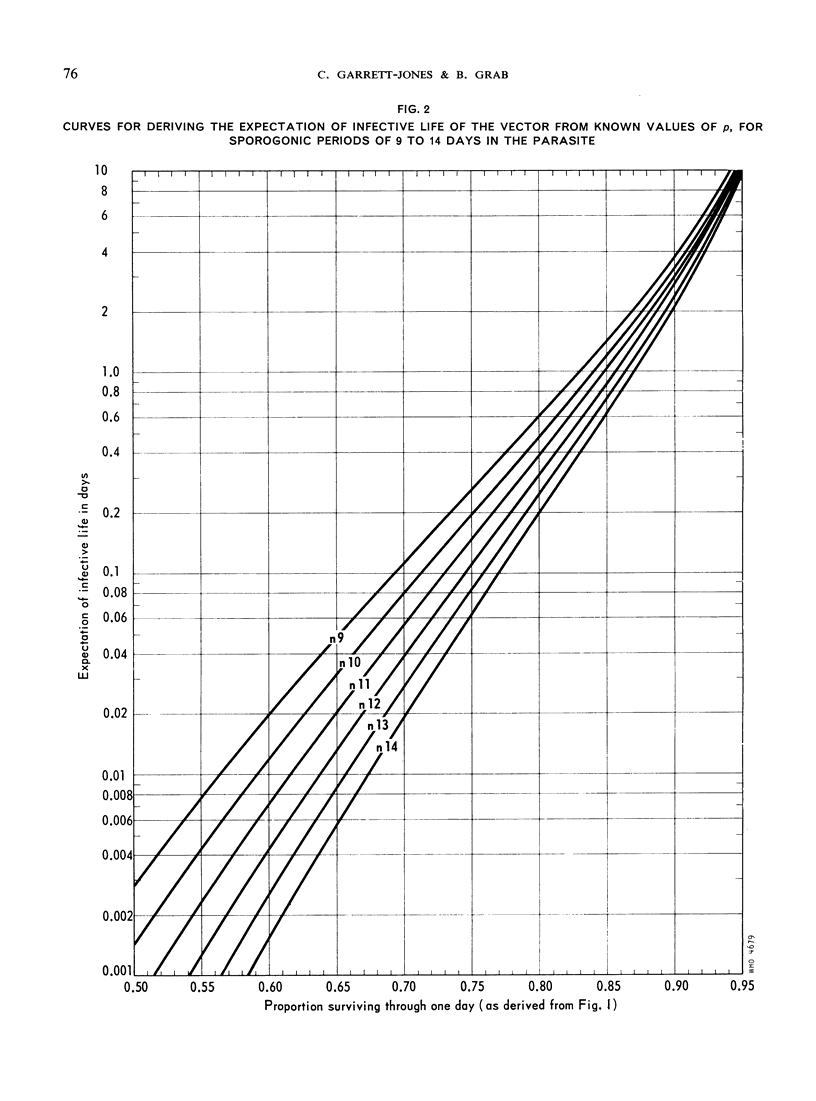
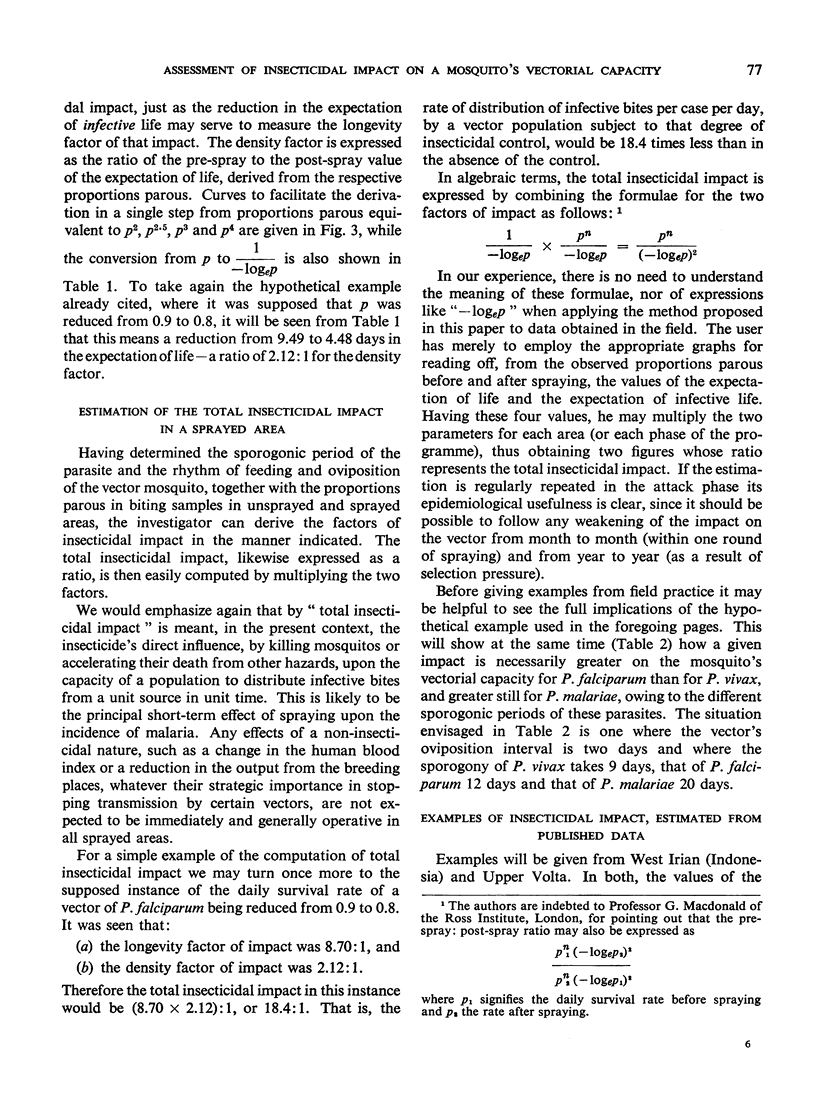
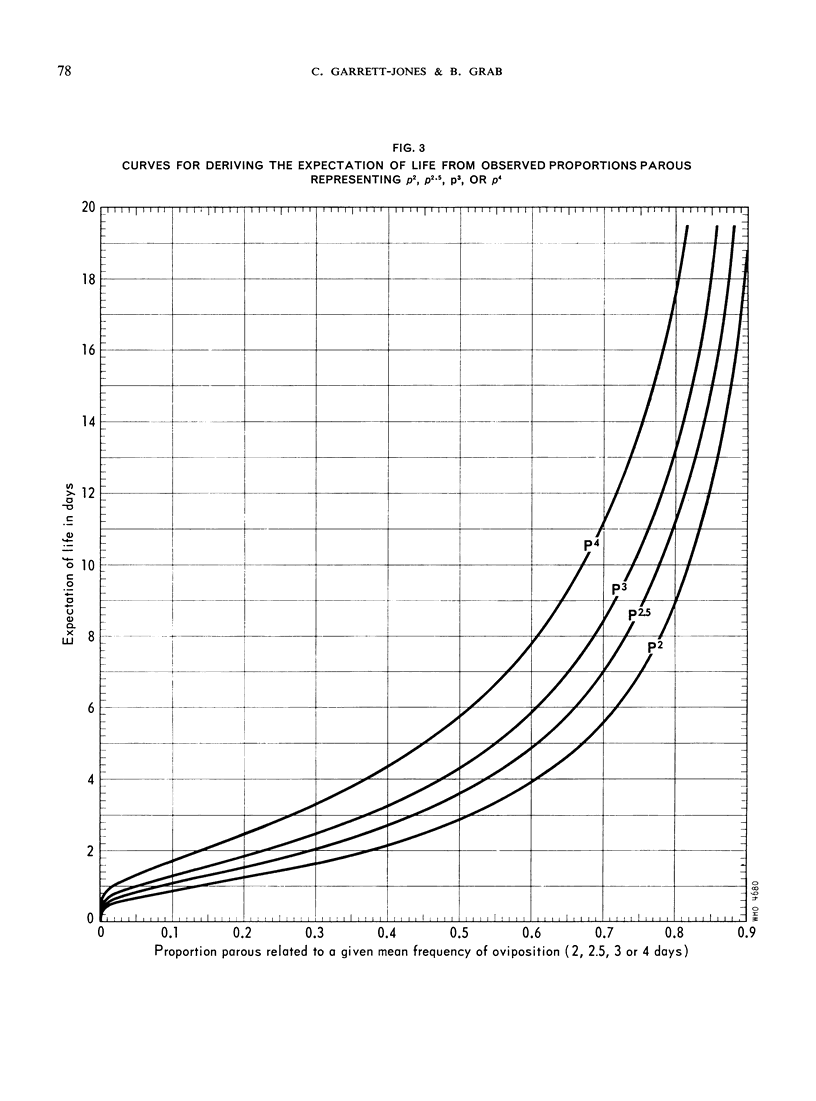
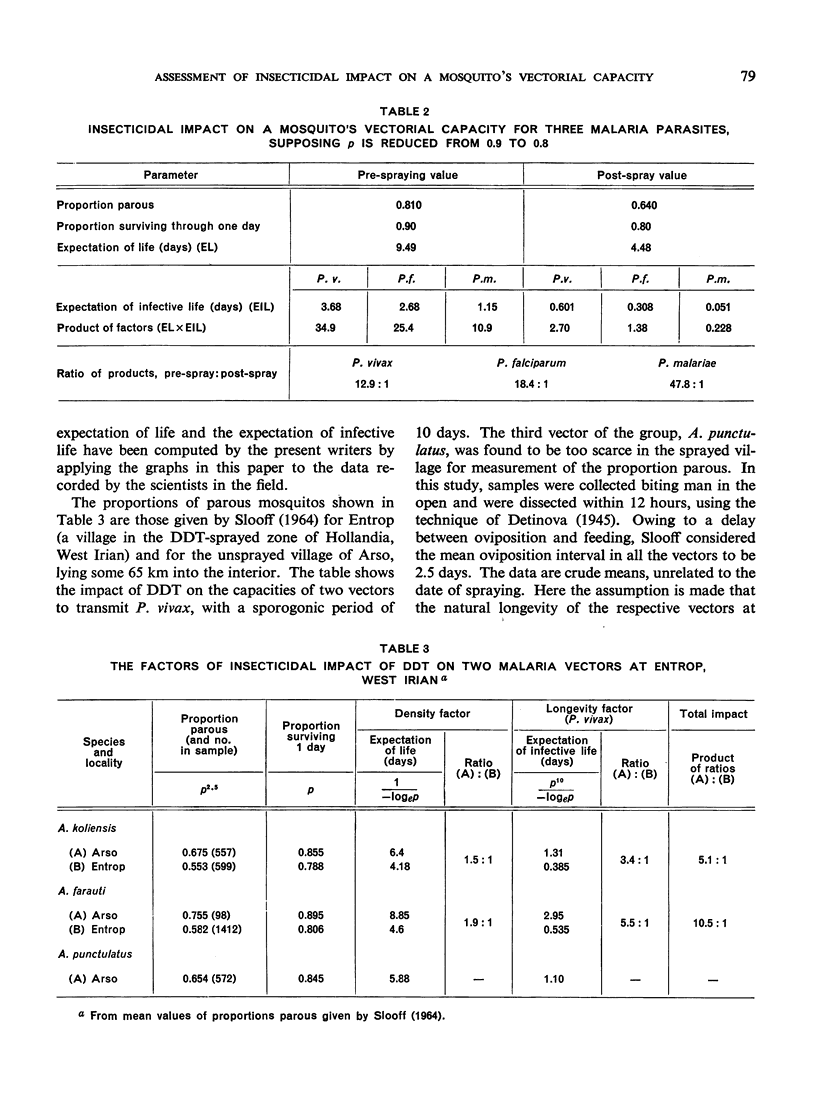
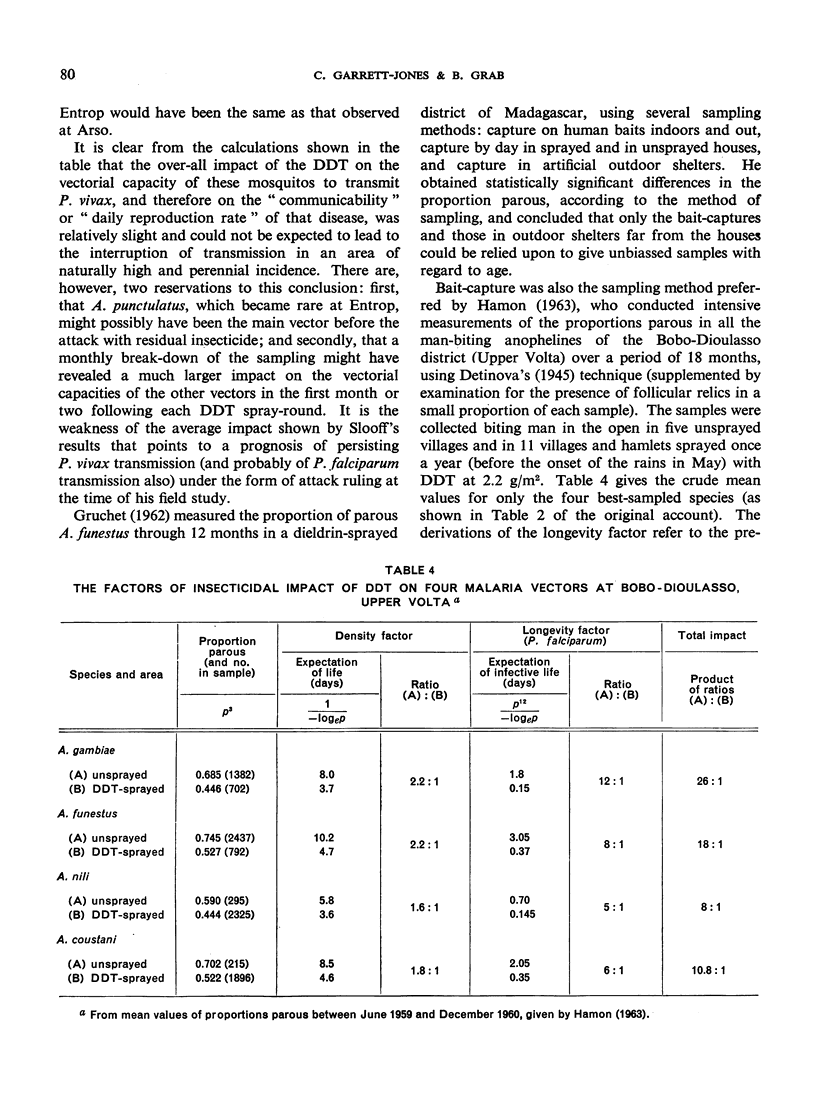
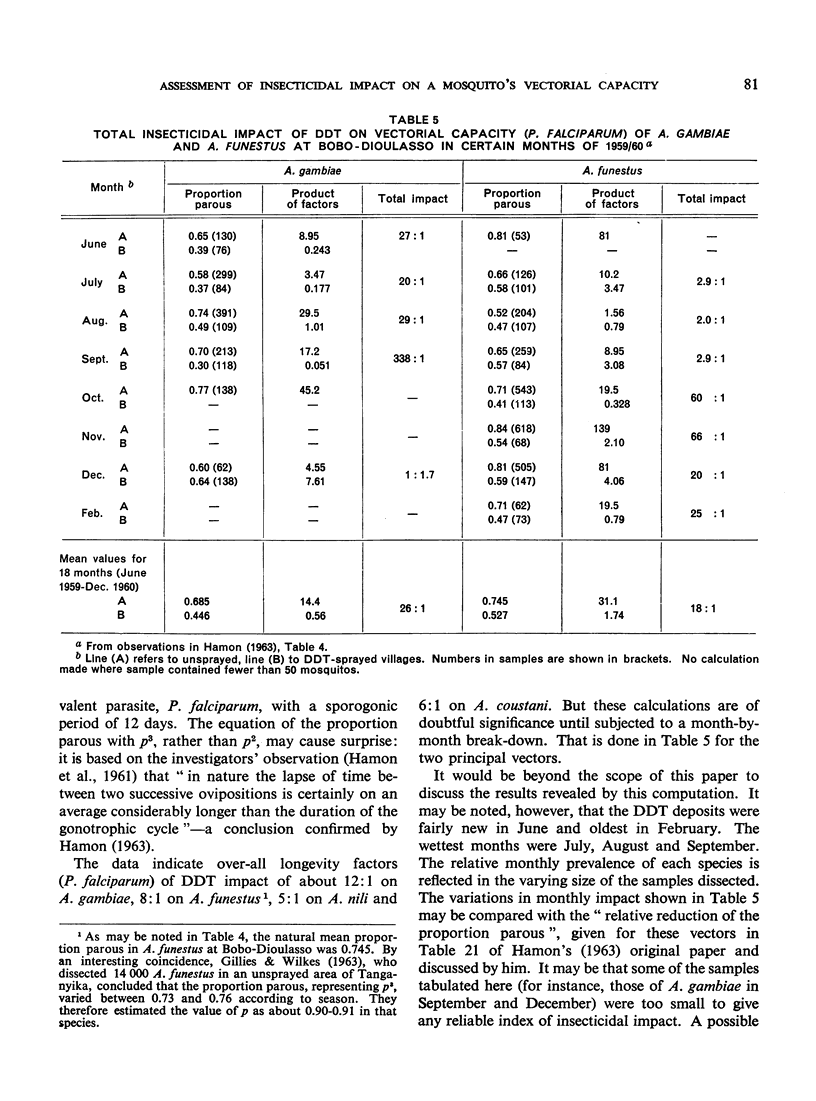
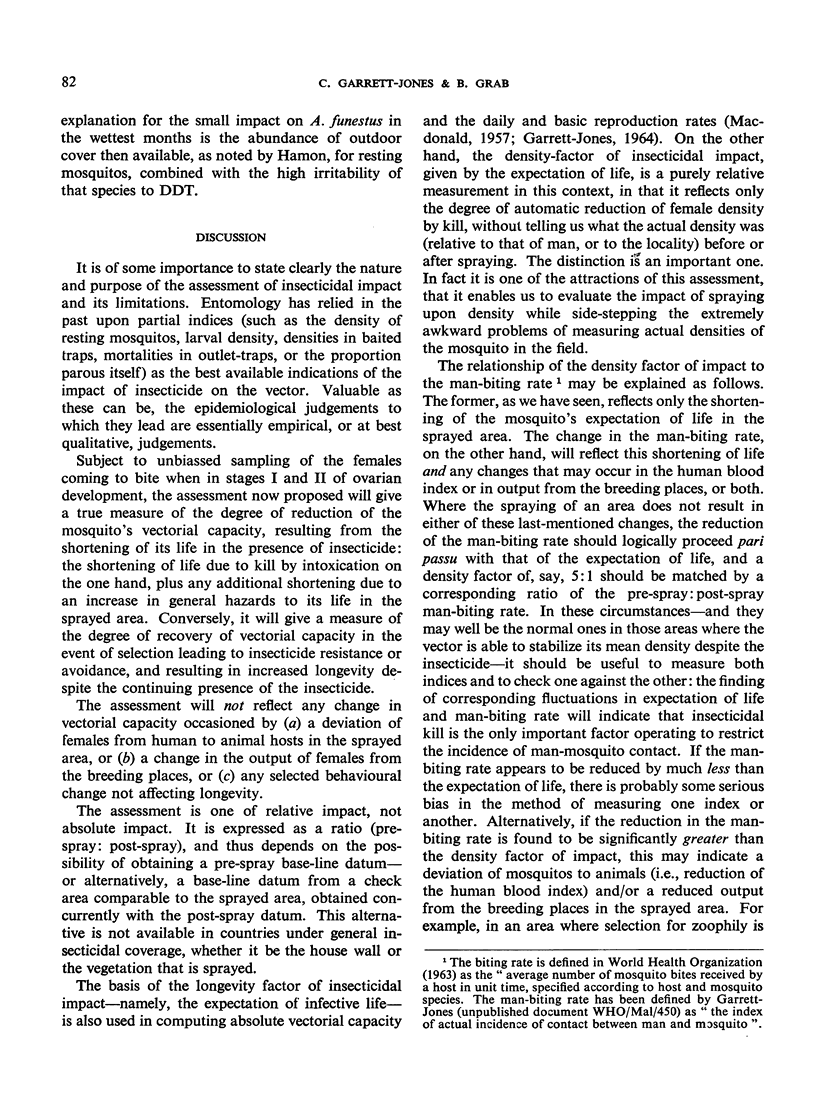
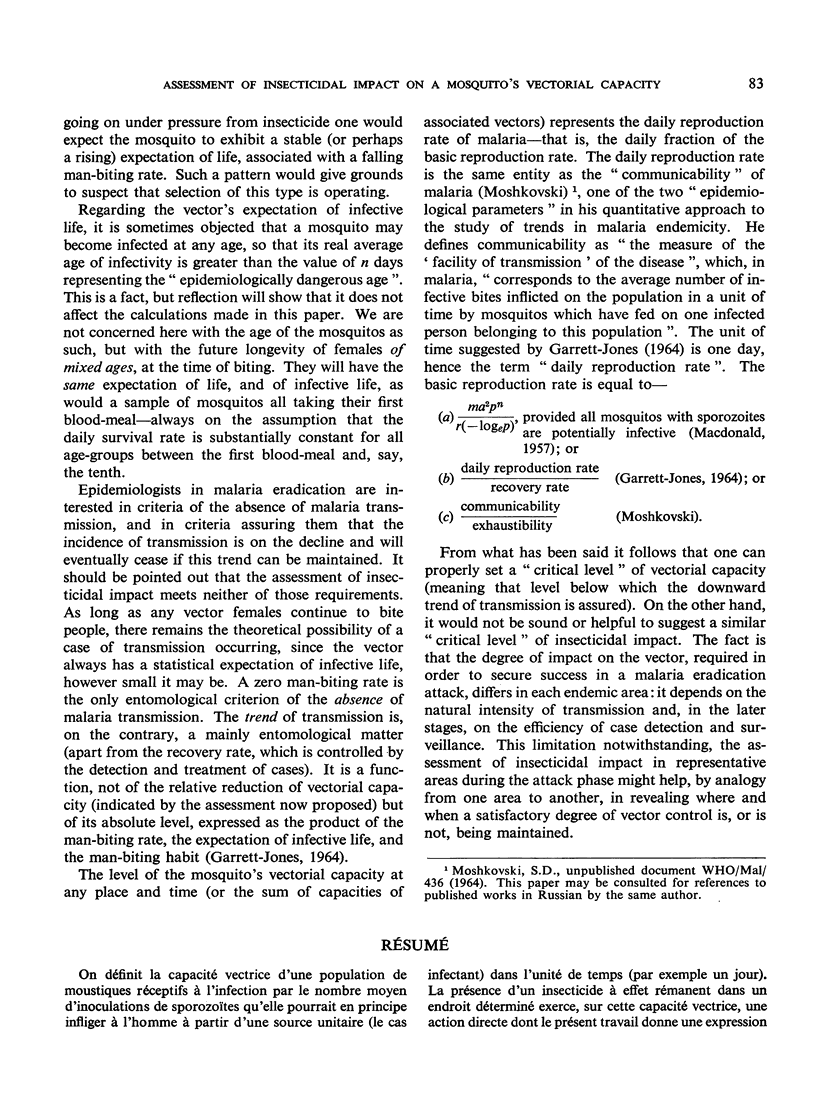
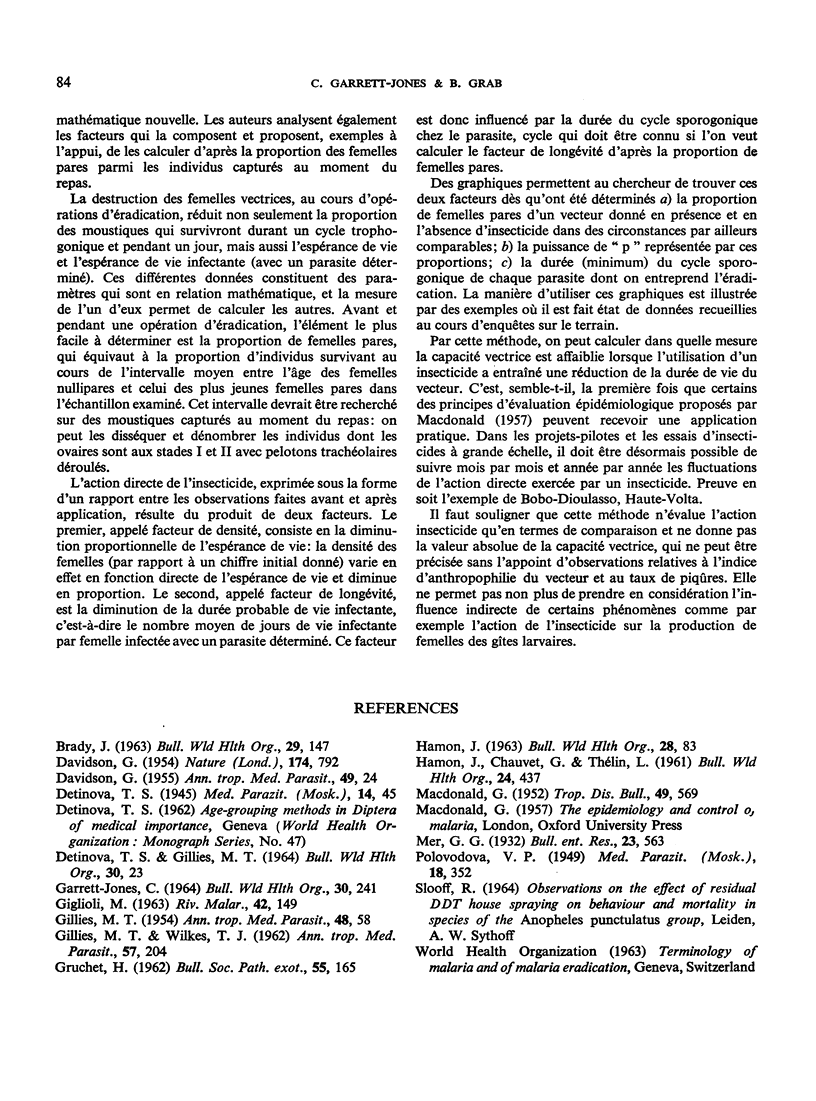
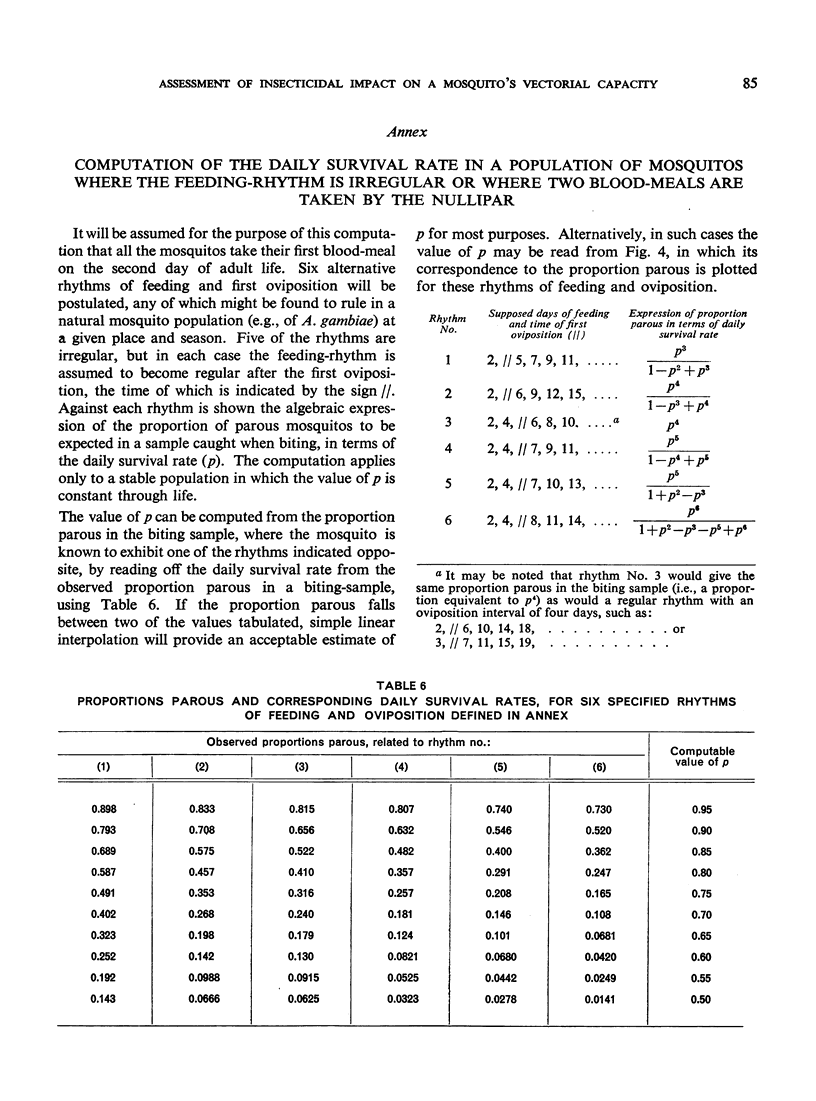
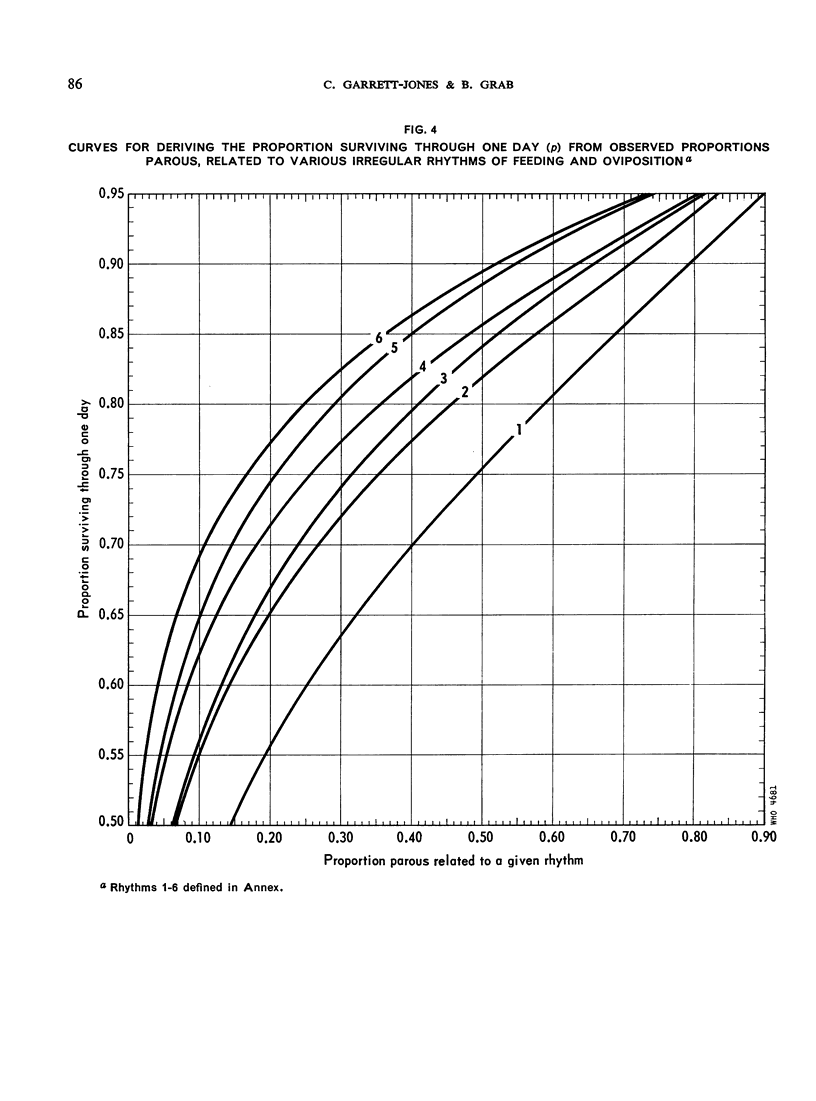
Selected References
These references are in PubMed. This may not be the complete list of references from this article.
- DAVIDSON G. Estimation of the survivalrate of anopheline mosquitoes in nature. Nature. 1954 Oct 23;174(4434):792–793. doi: 10.1038/174792a0. [DOI] [PubMed] [Google Scholar]
- DAVIDSON G. Measurement of the ampulla of the oviduct as a means of determining the natural daily mortality of Anopheles gambiae. Ann Trop Med Parasitol. 1955 Mar;49(1):24–36. doi: 10.1080/00034983.1955.11685648. [DOI] [PubMed] [Google Scholar]
- DETINOVA T. S., GILLIES M. T. OBSERVATIONS ON THE DETERMINATION OF THE AGE COMPOSITION AND EPIDEMIOLOGICAL IMPORTANCE OF POPULATIONS OF ANOPHELES GAMBIAE GILES AND ANOPHELES FUNESTUS GILES IN TANGANYIKA. Bull World Health Organ. 1964;30:23–28. [PMC free article] [PubMed] [Google Scholar]
- GARRETT-JONES C. THE HUMAN BLOOD INDEX OF MALARIA VECTORS IN RELATION TO EPIDEMIOLOGICAL ASSESSMENT. Bull World Health Organ. 1964;30:241–261. [PMC free article] [PubMed] [Google Scholar]
- GIGLIOLI M. E. THE FEMALE REPRODUCTIVE SYSTEM OF ANOPHELES GAMBIAE MELAS. I. THE STRUCTURE AND FUNCTION OF THE GENITAL DUCTS AND ASSOCIATED ORGANS. Riv Malariol. 1963 Dec;42:149–176. [PubMed] [Google Scholar]
- GILLIES M. T. The recognition of age-groups within populations of Anopheles gambiae by the pre-gravid rate and the sporozoite rate. Ann Trop Med Parasitol. 1954 Mar;48(1):58–74. doi: 10.1080/00034983.1954.11685599. [DOI] [PubMed] [Google Scholar]
- GILLIES M. T., WILKES T. J. OBSERVATIONS ON NULLIPAROUS AND PAROUS RATES IN A POPULATION OF ANOPHELES FUNESTUS IN EAST AFRICA. Ann Trop Med Parasitol. 1963 Jun;57:204–213. doi: 10.1080/00034983.1963.11686175. [DOI] [PubMed] [Google Scholar]
- GRUCHET H. [Study of the physiological age of the females of Anopheles funestus funestus Giles in the region of Miandrivazo, Madagascar]. Bull Soc Pathol Exot Filiales. 1962 Jan-Feb;55:165–174. [PubMed] [Google Scholar]
- HAMON J., CHAUVET G., THELIN L. [Observations on the methods of evaluation of the physiological age of female Anopheles]. Bull World Health Organ. 1961;24:437–443. [PMC free article] [PubMed] [Google Scholar]
- MACDONALD G. The analysis of the sporozoite rate. Trop Dis Bull. 1952 Jun;49(6):569–586. [PubMed] [Google Scholar]


